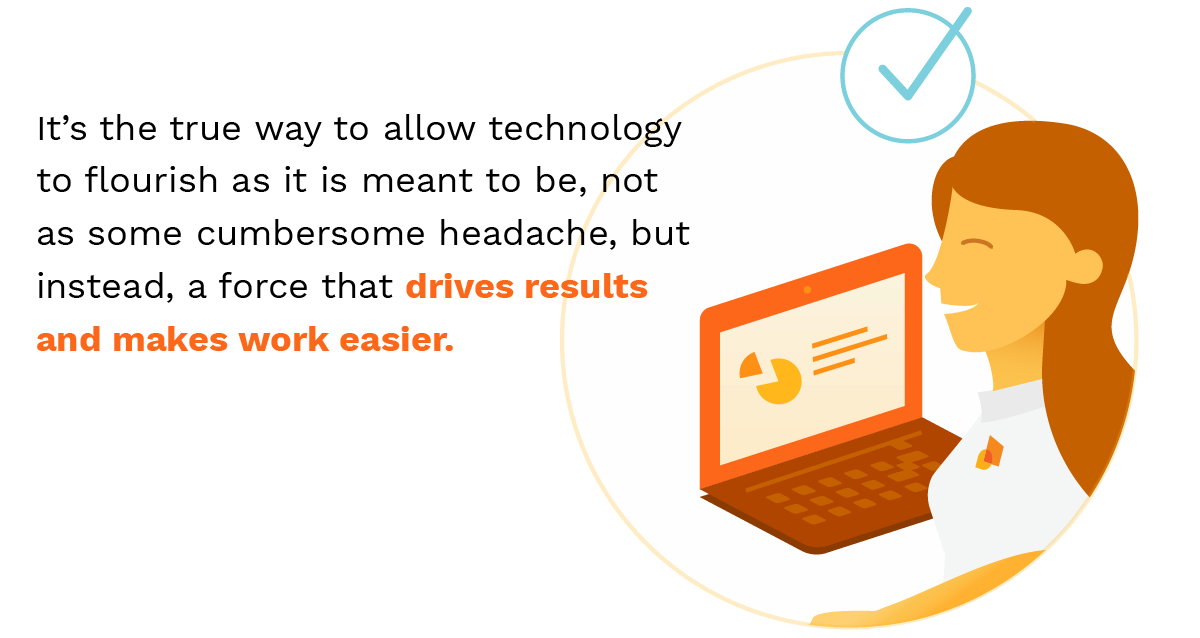The modern office is a far cry from what it was just a decade ago. Concepts such as the cloud, BYOD, and many other technological pieces that we have come utilize every day were previously not a part of daily office life. Technology constantly innovates itself to achieve new, cutting-edge heights. With every piece of outdated technology that passes, a new one takes its place, becoming more and more available to everyone around the world. Ignoring these changes can negatively affect your business’ productivity. It is important for you, your business, and your employees to understand that new technologies impact your business’ success and need to be cared for and sought after. Technology that remains stagnant can often be a detriment to your company.

By bringing in an exterior managed services team, your business will avoid those potential risks, making technology less of a scare and more of a force to spur greater change. Managed services, like those offered by Office1, can transform your technology to perform more efficiently and with greater quality–without compromise.
Times Have Changed
Think of all the systems, both software and hardware, that are utilized in your office. The list of technologies, which stretches from Adobe Suite and printers to the cloud and smartphones, is endless. The recent boom of personal devices, such as laptops, tablets, and smartphones, has created an overlap of business and personal technologies. Employees have come to expect their preferred technologies to be used both at home and in the office. However, a 2018 Gartner study suggests that only 44% of the total workforce, many being Generation Y or Millennials, are satisfied with the technology they use at work, whereas, 64% of the total workforce is completely satisfied with technology tools they use in their personal lives. As these younger generations begin to dominate the workforce, companies who fall behind in digital transformation will fall behind their competition, making it impossible for them to sustain the needs of the current workforce.
If managed well, the combination of many technologies can bring great amounts of efficiency to your business. On the other hand, breakdowns caused by a lack of maintenance and support can severely impair the productivity of your office. Even with a dedicated IT department, it’s nearly impossible for an internal team to be well versed in each program or piece of equipment that enters the office ecosystem, especially as employees are choosing to bring their own devices. Even if it was possible for a team to achieve expertise in each of these new fields, it would be a costly endeavor, negating the potential benefits. This is where managed services can help provide your business with the ability to utilize necessary technology and transform into a cutting edge hive of workflow efficiency.
Keeping You Ahead of the Curve

A Managed Service Solution is the practice of outsourcing certain IT tasks on a proactive paradigm to reduce downtime, boost workflow, cut costs, and unify any potential issues in order to resolve them as fast as possible with precision and speed. As stated previously, new technology becomes readily available on a rapid scale, and having an IT team equipped with an impossible range of expertise is not a sustainable endeavor to undertake. Instead of retraining your IT team for each piece of technology, managed services allows your business to access current expertise that would otherwise be a financial burden and cause office-wide headaches. The proactive nature of managed services means that these technical issues are constantly monitored all under one banner at one cost.
Managed services stay competitive in a saturated market by providing the best services to their clients. For this reason, they strive to offer the newest technologies and impeccable knowledge to your business. If your business were to outsource IT through a managed service, you could expect to be on the front edge of brand new technologies, such as AI and self-healing automation, without having to fund research and development costs.
Managed services aim to employ technology to help automate and optimize business processes. It removes any limiters that would exist to prevent your employees from being able to use their apps and technology at work. What managed services bring to the table is a way to safeguard technology and maintain it so that everyone can do their jobs accordingly with minimal interference. It removes any possible inhibitors that would prevent a smooth and functioning workflow and works in tandem with employee brought software and hardware. This allows for efficiency to thrive and innovation to exist in an ecosystem that fosters a diverse set of technology in order to give the office unyielding flexibility in what it can accomplish.
Opportunities Without Burden
Outsourcing with managed services gives offices a competitive edge. Businesses that choose to adopt managed services open the avenue to allow automation and other helpful processes to maintain business infrastructure, without overburdening the IT department.

When downtime occurs everything is affected from the bottom up–from the employees to the business as a whole. Managed services help those issues get resolved without any hassle, allowing your IT team to focus on more important tasks that keep the office running.
As the years progress, more and more companies will look towards outsourcing to keep up with technological demands. The same Gartner study mentioned above predicts that by next year, already 40% of midsize enterprises will outsource to managed service providers. A recent GSA report suggests that upwards of 70% of businesses significantly increase their MSP outsourcing in the next few years.
Technology is a changing force. As the years go by, it inherently seeks to better itself and make itself more available to the public. It is important to embrace this change, as long as a proactive approach of managed services is present. Outsourced managed services is not a replacement for IT, but a necessary supplement that allows your IT to foster technology for the office, enabling your business to gain a critical advantage against competition. Outsourcing managed services is a cost friendly and effective way of managing the technological landscape as well as providing the technology that your workers use daily. As long as services are correctly managed, digital transformation in your office will not be a long and painful process.
Categories: Managed Services, Managed IT Services











